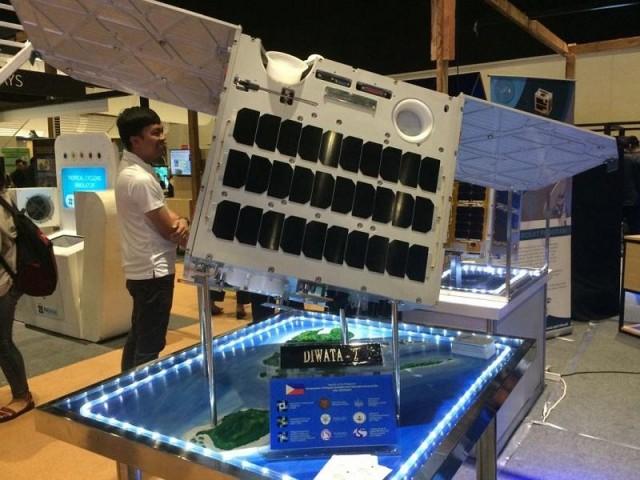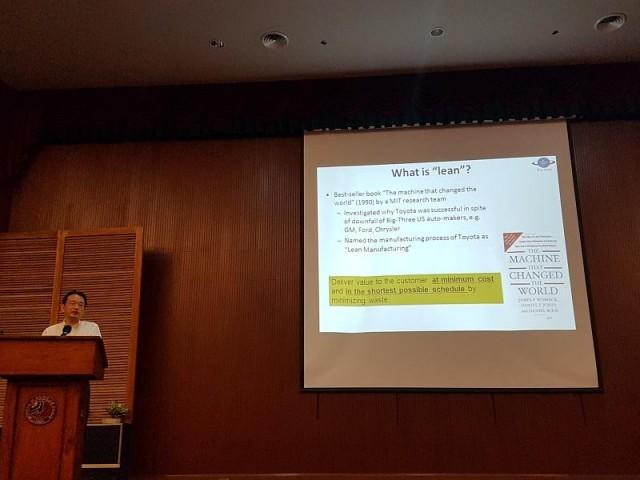What are ‘lean’ satellites and how can they help PHL participate in space race?
The Philippines has a shot at participating in the space race, thanks to 'lean' satellites, a relatively new concept from Japan.
“The lean satellite is a new breed of satellite that takes advantage of components that run on our cell phones, TVs and cameras. [Making lean satellites] is riskier, because the components are not built for space,” said Dr. Joel Marciano, PHL-Microsat Program leader, in a recent a public lecture on lean satellites at UP Diliman.
“You have to test them in a space-like environment before bringing them to space. There’s a risk, but you manage that risk,” Dr. Marciano continued.
By using non-space materials that work on Earth, satellites can be built in a faster, and more cost-effective manner, according to Marciano.
“That’s allowing countries like us...to participate in the space race…to be more agile in space,” Marciano said, referring to the novel, lean satellite concept.
According to Marciano, the Diwata-1, Maya CubeSat and Diwata-2 are considered lean satellites.

‘Non-traditional’
Known to space scientists and engineers as the ‘new, non-traditional way of making satellites’, the idea of small ‘lean’ satellites was conceptualized in 2014, as a result of an International Academy of Astronautics (IAA) workshop on small-scale satellite standardisation.
The concept came at a time when people were looking for alternatives to traditional — expensive and bulky — satellites.
The origin of the word, “lean”, came from a book written by Taichi Ohno about the Toyota Production System.
The book detailed the car company’s "lean" manufacturing process, which aimed to deliver value to the customer at minimum cost, in the shortest possible schedule, while minimizing waste.
This was highlighted by Kyushu Institute of Technology (KyuTech) applied systems engineering professor Mengu Cho, who flew all the way from Japan to give a series of lectures to Pinoy space scientists, engineers and students last week.
Cho is also the Director of the Laboratory of Spacecraft Environment Interaction Engineering (LaSEINE).
“A lean satellite is a satellite that utilizes non-traditional, risk-taking development and management approaches with the aim of providing value of some kind to the customer, at low-cost and without taking much time to realize the satellite mission,” he said, at the same March 8 public lecture.
Cho described lean satellites to open a new chapter of systems engineering: “A lean satellite has a light mass, small size, simple build, and non-space parts,” he said.
Compared to its traditional, bulky counterpart, a lean satellite’s small mass allows for cheaper launches per kilogram, and its small size allows for ease of handling.
One of the lean satellite’s main features was that it could be produced by 5 to 7 workers, instead of the usual hundred.
“For lean satellites, salary for the personnel is the biggest expenditure of commercial space-faring companies,” he said.

‘With limits’
As innovative and promising as they may sound, lean satellites also have their limits.
Cho highlighted that stakeholders who decide to invest or create lean satellites should know that lean satellites can deliver quality products, but they cannot be 100 percent dependable.
Because of its small size, a lean satellite will not be able to execute as many tasks as a traditional satellite would.
“A Cube Satellite (CubeSat)- which is an example of a lean satellite- cannot take high-resolution images, handle large amounts of communication data, require real-time communication and require precise attitude control,” he said.
Some of the CubeSat’s strong advantages lie in sensor data relay, text messaging, non-imaging observation like weather data measurement, and low-resolution imaging observation.
“Due to [the lean satellite’s] nature of simplicity, it is better to build a constellation tailored to each service,” he suggested.
‘There is a market’
Joining Cho is Dr. Sangkyun Kim, an Assistant Professor in the LaSEINE, who talked about the numerous venture companies that started investing and manufacturing lean satellites.
“The lean satellite market is growing at a fast speed. In 2017, the worldwide market of nanosatellite and microsatellites were estimated at 1.21 B USD. In 2022, it is estimated to be at 3.49 B USD,” Kim said, underscoring that, high-profile investor Softbank invested 1B USD in OneWeb, a satellite constellation dedicated to providing global satellite Internet, in 2016.
According to Kim, there really is a thriving, international market for lean satellites.
Because of this, Cho believes that lean satellites open the possibility of diversifying the space sector while bringing about new talent, new ideas and more money.
“Lean satellites are not there to replace the traditional space sector. [They are meant] to complement and expand it. Lean satellites may face many challenges, but challenges evolve them further,” Cho said. — LA, GMA News





